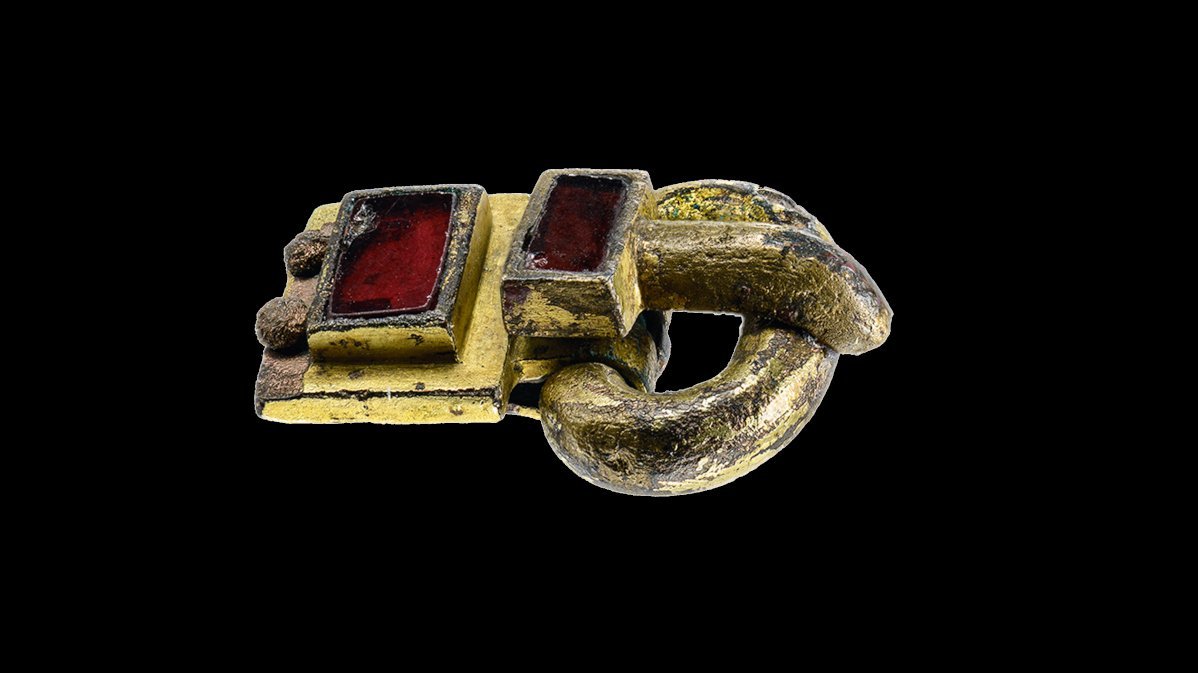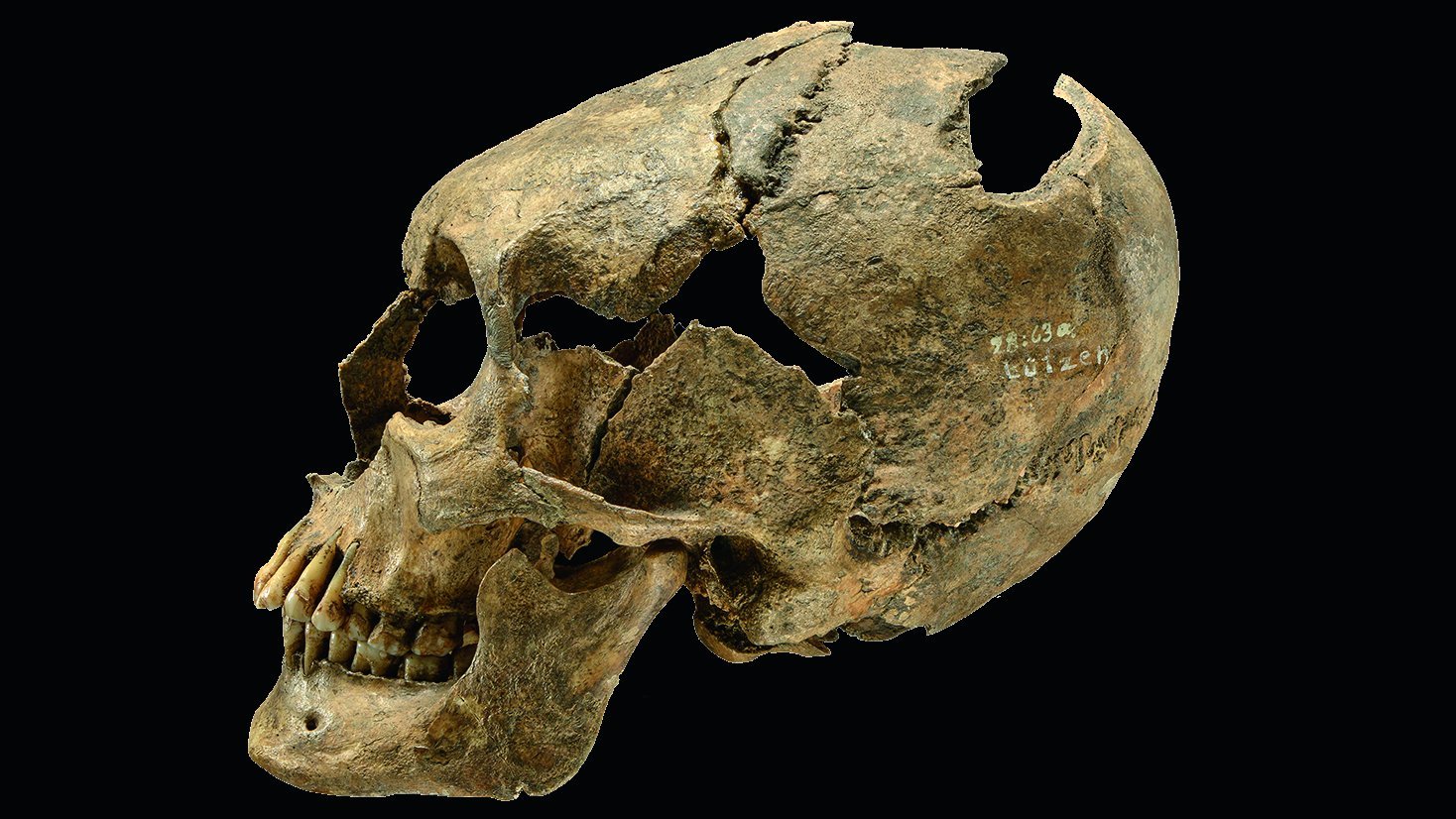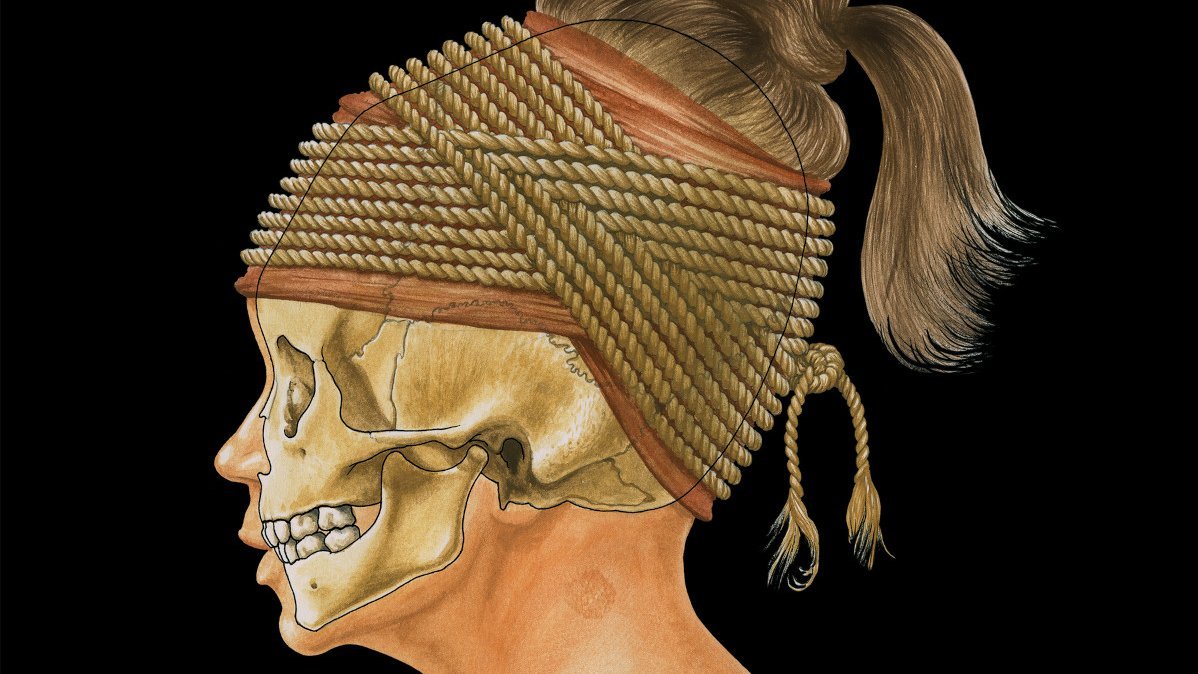Barbarian Potency
Storm of the Huns
Around AD 375, armies of Hunnic horsemen from the Central Asian steppes invaded Eastern Europe. They harassed both the Roman Empire and peoples outside the empire and subjugated or expelled numerous people. Nevertheless, during this period no complete peoples were on the move, but rather disparate army units that did not necessarily see themselves as communities of descent.
The invasion of the Huns accelerated the disintegration of the Western Roman Empire just as much as it promoted the emergence of Germanic empires. In the continuous process of settlement and displacement, new protective and legal communities took on their own identities, including the Thuringii (Thuringians), who were first documented in this country towards the end of the 4th century AD.
The militarily successful Huns, who attacked on agile horses with new types of reflex bows, had a great cultural appeal. Golden belt buckles with red almandine inlays and round mirrors made of leaded bronze are material evidence of this influence. Some Germani also took up the rider nomadic custom of deliberate skull deformation. In this case, the cranium is in early childhood raised with bandages and boards to create a so-called tower skull.


